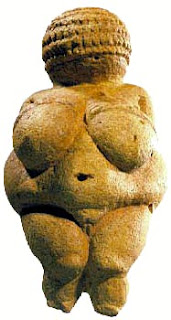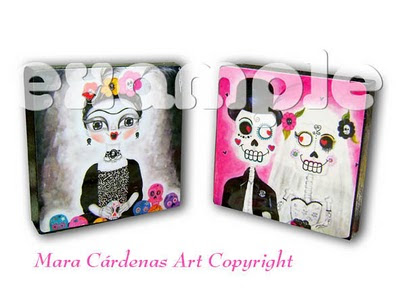Does the camera obscura influenced artists to make abstract art?
 |
| Gustave Courbet, Ornans Funeral (1849-1850) 314 x 663 cm |
 |
| Gustave Courbet, The Studio: A Real Allegory (1855) 361 X 598 cm. |
 |
| Edouard Manet, Luncheon on the Grass (1863) 208 X 265 cm. |
 |
| Claude Monet, Impression: Sunrise (1872) 48 x 63 cm. |
 |
| Van Gogh, Starry Night (1889) 72 X 92 cm. |
 |
| Henri Matisse, The Joy of Life (1905-1906) 175 X 241 cm. |
 |
| Pablo Picasso, Violin and Grapes (1912) 50.6 X 61 cm. |
 |
| Vasily Kandinsky, Black Lines (1913) 129 X 129 cm. |
Does the camera obscura influenced artists in the Renaissance and how it influenced other artists to abstract paint? Sandy, Dallas, Texas camera obscura is Latin for "dark room" and is the optical phenomenon where light rays are placed upside down through a hole. The image is turned into a screen when it is parallel to the hole, that way you can copy the sketch on paper or cloth. The principle was known by Aristotle, 350 BC In the sixteenth century technology has improved the camera obscura. It was portable, the use of angled mirrors and lenses, the image could be more accurate. Was used as an aid to drawing, the subject rested and the image reflected in a paper that the artist made the sketch.
The camera obscura was an instrument used by artists because the perspective was more accurate and therefore increased the realism of the painting. It is known that the camera obscura had been known since the Renaissance, because Leonardo described it in his notebook Codex Atlanticus
. Leonardo used the camera obscura to study the types of light as it is written is to study their treaty and shadow, perspective, water movement and the phenomenon of light. Sandy
to answer the first part of your question, little is known of the use of the camera obscura in Renaissance painting. Yes it was known by the artists, but the use of the camera obscura is not seen in his works. There are several generations of dark room and with each generation, the image was more faithful to the natural world. The Renaissance artist may have been influenced by the use of the camera obscura, but art researchers were unable to find any paintings made during the Renaissance that has been done with the help of the camera obscura.
However it is known that in the seventeenth century Vermeer and Canaletto in the eighteenth century used the camera obscura for the accuracy of the details and the aerial perspective of their works. When looking at some of his works seem a photograph, which is why art researchers have been able to say they used the camera obscura. Space and the look of Renaissance paintings are totally different from that of Vermeer and Canaletto. X-rays in some Vermeer paintings have shown traces of drawings at his web.
The camera obscura is the archetype of the modern camera invented in 1839 by Louis Daguerre. After the photograph was patented changed painting forever. The painter Paul Delaroche one of the most successful academic painters said "from today painting is dead." Because the painting was to imitate reality, but the daguerreotype was more accurate and real than any painting. Painters had to take a new paint aproche to get away from realistic as they tried to imitate.
Realism was the first movement art when the daguerreotype was patented. The painters took a new approach in his painting to create allegories drawn from real life that were almost impossible to make with the daguerreotype. Courbet also made to differentiate large pictures of the daguerreotype was small. It can be seen in the paintings of Courbet Burial at Ornans
(1849-1850) that measures 6.63 meters long and
allegorical painting The Studio: A Real Allegory (1855) of 5.98 meters. Another important artist Edouard Manet was realistic with his
Luncheon on the Grass (1863) mixed a still life, portrait, landscape and creating 3 tracks in one box. While the daguerreotype photography only to portraits or still life only.
came after Impressionism Realism that for the first time in the history of art, the image was broken with heavy brush strokes that were supposed to be joined by the eyes of the beholder. This can be seen in the painting of the founder of Impressionism, Claude Monet
Impression: Sunrise (1872). The next move was the Post-Impressionism Vincent Van Gogh to lead the way. The image is diluted even more, where every picture was made with thick brush strokes as seen in
The Starry Night (1889). Realism was no longer in the minds of artists, they wanted to give emotion to the observer and creativity was very important.
While the picture was doing imitate painting portraits, landscapes and still lifes, painting is more real-world away. After the Post-Impressionism came Fauvism with Henri Matisse used color like never before. His painting was green and blue trunks, yellow, blue and red is the grass as in his painting
The Joy of Life (1905-1906), changing the colors of the real world. Following the Fauves, Cubism came for the first time in 600 years broke the use of perspective since the Renaissance, the subject simultaneously seeing both sides and painted with monochrome and without perspective, as seen in the work of Pablo Picasso Violin and Grapes
(1912). Cubism
Later came a movement based in Munich, Der Blaue Reiter (The Blue Rider) with Vasily Kandinsky leading this movement. He created the first nonobjective painting in 1913 with Black Lines
box, where the lines and color take different values \u200b\u200bindependent of the other, created a dynamism and movement based on a total abstraction and not based on nature.
How can you observe, the artists used size, color, perspective and broke the image to be different from the picture when the daguerreotype was patented. Artists diluted the image, then color, immediately perspective and 74 years later made the first abstract painting. Sandy
most important thing is you have to remember is that we abstract painting because photography was invented and the first abstract painting was done by Kandinsky in 1913.
Thanks for your good question, if you have more questions send me them will gladly answer them. Augusto
Chimpan




































![[297b.jpg]](https://blogger.googleusercontent.com/img/b/R29vZ2xl/AVvXsEgZvVuVqvRsOtb9OGWUAWSn7GWFzPTDJrK7ty466hyg9GF-telGs9Yh8VOfoWct8FhW5vq8bpR8968wVaVkkjsiXHZNWRJyJEvpuzdaZngBHK3uMRKkXzcPWv_g-wXhTUOL7C4H5F_SBII2/s400/297b.jpg)




